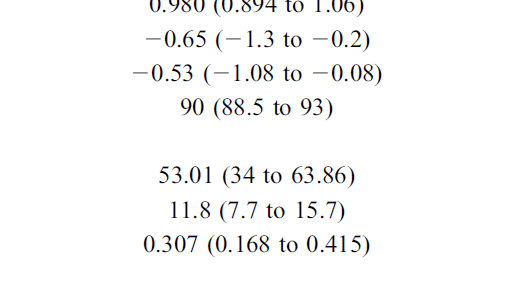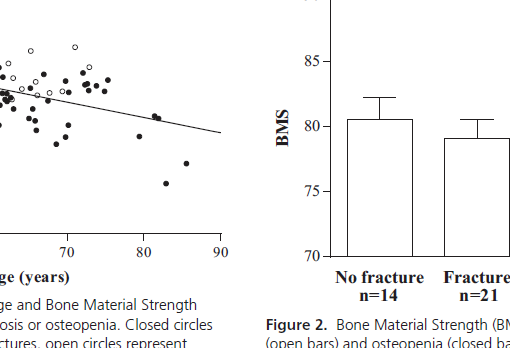Abstract
Obesity is associated with increased risk of fractures, especially at skeletal sites with a large proportion of cortical bone, such as the humerus and ankle. Obesity increases fracture risk independently of BMD, indicating that increased adipose tissue could have negative effects on bone quality. Microindentation assesses bone material strength index (BMSi) in vivo in humans. The aim of this study was to investigate if different depots of adipose tissue were associated with BMSi and cortical bone microstructure in a population based group of 202 women, 78.2 ± 1.1 (mean ± SD) years old. Bone parameters and subcutaneous (s.c.) fat were measured at the tibia with an XtremeCT device. BMSi was assessed using the OsteoProbe device, and based on at least 11 valid reference point indentations at the mid-tibia. Body composition was measured with dual X-ray absorptiometry. BMSi was inversely correlated to body mass index (BMI) (r = -0.17, p = 0.01), whole body fat mass (r = -0.16,p = 0.02), and, in particular, to tibia s.c. fat (r = -0.33, p < 0.001). Tibia s.c. fat was also correlated to cortical porosity (Ct.Po; r = 0.19, p = 0.01) and cortical volumetric BMD (Ct.vBMD; r = -0.23, p = 0.001). Using linear regression analyses, tibia s.c. fat was found to be independent of covariates (age, height, log weight, bisphosphonates or glucocorticoid use, smoking, calcium intake, walking speed, and BMSi operator) and associated with BMSi (β = -0.34,p < 0.001), Ct.Po (β = 0.18, p = 0.01), and Ct.vBMD (β = -0.32, p < 0.001). BMSi was independent of covariates associated with cortical porosity (β = -0.14, p = 0.04) and cortical volumetric BMD (β = 0.21, p = 0.02) at the distal tibia, but these bone parameters could only explain 3.3% and 5.1% of the variation in BMSi, respectively. In conclusion, fat mass was independently and inversely associated with BMSi and Ct.vBMD, but positively associated with Ct.Po, indicating a possible adverse effect of adipose tissue on bone quality and bone microstructure. Local s.c. fat in tibia was most strongly associated with these bone traits, suggesting a local or paracrine, rather than systemic, negative effect of fat on bone.
https://www.ncbi.nlm.nih.gov/pubmed/26588353
J Bone Miner Res. 2016 Apr;31(4):749-57. doi: 10.1002/jbmr.2747. Epub 2015 Dec 22.





